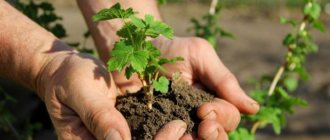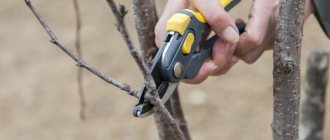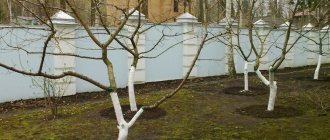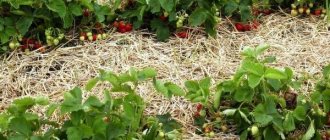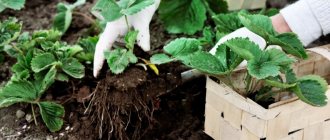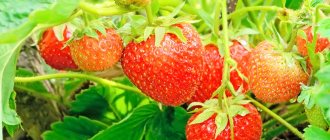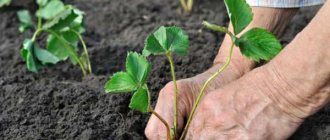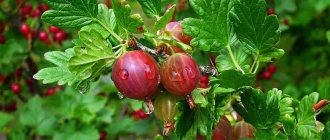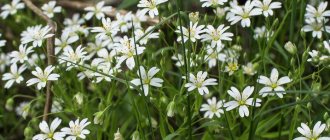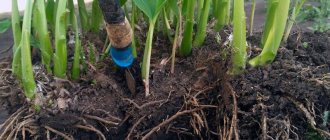The schedule for sowing seeds for seedlings depends on a number of factors. It is based on the characteristics of the ripening of a particular culture. Secondary – phases of the moon and climatic data of the area. The method of planting seedlings also plays an important role: the sowing time is determined by whether the prepared plants will be transferred to the greenhouse or open ground in the future.
Experienced gardeners begin to draw up a schedule for planting seeds for seedlings in the fall, determining for themselves the approximate planting dates with an error based on weather conditions. This allows you not only to streamline the future agricultural season, but also to get a good harvest.
Spring planting dates
One of the conditions for successfully planting strawberries is choosing the right moment. The timing depends on the region, climate and specific weather conditions. Approximate calendar dates for planting seedlings:
- in southern regions with mild climates - March 5-15;
- in regions with a temperate climate - from April 10 to early May;
- in the northern regions - May 1-15.
These dates are approximate; in addition, it is important to take into account the weather. Strawberry seedlings are planted under the following conditions:
- stable temperature at +10…+15 °C;
- the top layer of soil warmed up to +8…+9 °C;
- On the day of planting the weather should be cloudless.
In most regions, after the specified dates, the threat of spring frosts remains. To protect young strawberries from freezing, use film or agrofibre. They also cover a new plantation when there are prolonged spring rains.
Pros and cons of spring planting
Pros of spring planting:
- Seedlings planted in the spring, when placed in a warm, favorable environment, have the opportunity to strengthen and form a powerful root system.
- The bushes, having gained strength during the spring-summer season, will enter winter healthy and will confidently withstand low temperatures.
- Bushes that do not take root in the spring can be easily replaced with new ones.
- Strawberries planted in spring are watered less - the soil contains a lot of moisture after the snow melts.
Spring planting has only one drawback - in the first summer the plants produce few berries, and there will be a good harvest only the next year.
Spring planting is especially popular in regions with harsh winters. For Siberia and the Urals, this is the only way to get strong strawberry bushes with a powerful root system. Planted in the spring, strawberry bushes have time to take root and grow well.
For the southern regions, spring planting is not profitable - it is difficult for young seedlings to grow and develop under the scorching sun. The same applies to the Moscow region, but here there is also an unfavorable environment.
What bushes are used for replanting?
The most prolific are young bushes that grow in one place for at least two years. Experienced gardeners use transplanting rooted tendrils or sections of bushes to a new location.
Young (two-year-old) strawberry bushes are the most prolific
To allow the soil to rest, after digging up old bushes, vegetable crops are planted for two to three years.
Ideally, bushes that are planned to be propagated should not be allowed to bear fruit by cutting off flower stalks. The uterine bush should be strong, with a large number of peduncles, and productive.
Video: how to choose a bush for replanting
Choosing a strawberry seedling
When choosing strawberry seedlings, follow these rules:
- deal only with trusted sellers - nurseries and specialized stores;
- purchase varieties released in your region.
Seedlings for planting are grown independently or purchased - with a closed or open root system.
With open root system
Seedlings with an open root system (ERS) are grown in beds. Its roots are open, so they are often damaged during transportation and transplantation. The survival rate of such planting material is lower than that of analogues sold in containers.
Watch a video about spring planting strawberries with an open root system:
Signs of quality seedlings:
- the bush has 3-5 leaves;
- leaves – strong, elastic, shiny, slightly pubescent;
- leaf color – bright green, without defects;
- developed root system of fibrous type - the roots are light, 8-10 cm in length, strong, without traces of rot;
- thick horns - from 7 mm, soft light green color;
- the growth points of peduncles are developed, without damage.
With closed root system
Seedlings with a closed root system (ZKS) are sold in containers or cassettes. This option guarantees a high survival rate. Seedlings with ZKS are more suitable for autumn planting.
When buying ZKS seedlings, pay attention to the following points:
- Inspect the cups - many sellers, wanting to make money, sell seedlings with OCS as cassettes, planting them a day or two before sale in plastic containers. The authenticity of the PCL is evidenced by the ends of the roots that have grown through the drainage holes.
- Inspect the seedlings. There should be no signs of disease or damage on it.
To get seedlings yourself, tear off the extra flower stalks with rosettes from the mother bushes - leave only the 2 strongest ones. When the tendrils take root, separate the young plants and plant them in containers.
Planting material can also be obtained using the Dutch method - it is called frigo. This technique is used when breeding large-fruited strawberries. Bushes are dug up in the fall, during the initial dormant phase. All leaves are torn off. Bushes devoid of leaves are stored until spring at a temperature from 0 to minus 3 ° C.
How to plant and replant strawberry tendrils
Strawberry propagation by mustache in summer
Strawberries are convenient because they can reproduce themselves. Every bush produces a mustache. All a gardener needs to propagate a plant is to know how to plant strawberries with tendrils. This method has its own characteristics.
Important! To get high-quality seedlings, the bush should not be depleted.
If you take a rich harvest from a bush, the mustache will grow poorly, the plant will become sick and depleted. Poor quality seedlings will produce unhealthy offspring.
The mustache must be collected from a bush that has been producing crops for several years. Firstly, a young annual bush will not produce fertile seedlings. Secondly, in the first year the yield of the bushes is assessed and the best of them are marked for seedlings for the next year. Flowers are removed from selected bushes during flowering so that the plant devotes all its energy to the growth of young shoots. During the period, the bush produces from 7 to 10 shoots.
Secret! The best seedlings come from the first rosettes.
It is necessary to remove most of the tendrils, leaving only the largest and largest shoots. Small shoots do not take root well and may not produce a harvest.
After the first rosettes appear on the shoots, they are attached to the ground and watered and fertilized abundantly so that the rosette takes root as quickly as possible. An alternative and effective way is to plant the rosette in a cup of soil. For better root growth on the rosette, it is not recommended to remove the tendril from the bush for 2-3 weeks.
Growing shoots in cups directly in the garden
After several leaves appear on the rosette, the tendril can be trimmed. The appearance of leaves ensures that the plant has developed strong roots and can independently obtain nutrients from the soil, without the participation of mother bushes. After 2-3 weeks, the rosette along with a lump of earth can be dug up and planted in a permanent place. It is recommended to transplant in rainy weather or in the evening, not sunny, with subsequent irrigation of the soil.
Preparation of planting material
If the seedlings were purchased in containers, then there are still two weeks to plant them. But it is better to plant seedlings with ACS as soon as possible. If you have to postpone planting in the ground - due to weather or other circumstances, it is necessary to “preserve” the seedlings.
Strawberry seedlings are placed in dark plastic bags, after being sprayed with water. Store in the basement for 5-7 days. The plants, after lying in the dark, will sprout new roots - they will help the bushes to quickly take root.
The procedure for preparing seedlings for planting:
- Leave no more than 4 leaves on each plant. Cut off all the rest - then the seedlings will take root better.
- Trim the roots with sharp pruners - their length should not exceed 10 cm.
- Dip the roots in a solution with a growth stimulator. If the seedlings have ZKS, just water them with the solution.
Before planting, the roots of seedlings can also be dipped in:
- clay mash;
- mash made from humus, soil and growth stimulant;
- a mixture of mullein and clay;
- garlic infusion;
- 1% solution of potassium permanganate or iodine.
One hour before planting, water the seedlings, adding mullein and herbal infusions.
Autumn transplant
In the central and northern regions of Russia, strawberry plantations begin to be established at the beginning - end of August, 2 weeks after fruiting. Residents of the southern regions can replant the crop in September and October. Select specific dates for work based on the development of seedlings. Replant those that are too small and fragile as early as possible. This way, they will have time to get stronger to survive the winter. Transplanting remontant strawberries in the fall:
- Prepare the soil: remove weeds, plow, fertilize with rotted manure (3 kg/sq. m), “Superphosphate” (30 g/sq. m), granulated urea (80-130 g/sq. m).
- Choose developed rosettes with at least 5 leaves.
- The day before planting, water the plants well.
- Dig up the bushes and place them in a clay mash for 2-3 hours.
- Dig holes 35cm apart.
- Place a 10 cm layer of sand at the bottom of each hole, pour in warm water, and plant rosettes.
- Water the plants. They can be mulched with straw or sawdust.
Step-by-step strawberry transplantation
Transplanting strawberries in the fall has the following advantages:
- coolness and rain promote rooting and growth of bushes (they take root in about 2-3 months);
- strengthened remontant strawberries survive frosts;
- laying a large number of flower buds;
- guarantee of a good harvest next season;
- in spring the bushes grow actively.
Disadvantages of the period:
- if it is hot, you will have to water the seedlings often - in the absence of moisture, the roots do not develop;
- autumn is not the right time to replant capricious varieties that require more time to adapt.
Preparing the site for planting
Features of site selection:
- Strawberry plantations are located in well-lit areas. The desired direction of the beds is from north to south or southwest. The plot is flat or with a slope of 2-3 degrees. Lowlands are not suitable. Here the plants are doomed to disease and vegetation from the cold air.
- The best soils for strawberries are chernozem and sandy loam soils. Clay, turf and light gray soils are less favorable. If the soil is heavy, sand is added during digging to make the soil loose. The optimal acidity level is pH 5.5-6.5.
- The occurrence of groundwater is at least 0.6-1 m.
- It is recommended to plant strawberries after lettuce, legumes, cereals, radishes, beets, carrots, and parsley. Unfavorable predecessors are cucumbers, potatoes, zucchini, sunflowers, tomatoes, Jerusalem artichokes.
Strawberries are not grown in one place for more than 3-4 years. Re-planting on the site - after 4-5 years.
How to prepare a landing site:
- In autumn, dig the soil 30 cm deep. Be sure to remove weed roots from the soil.
- Apply fertilizers - organic and mineral. The best option is manure or compost. The most valuable manure is horse manure. Fertilizers are spread around the area before digging - 2 buckets per 1 square meter. m. Add a glass of ash to each bucket.
- A month before planting, water the ground with hot lime (+70°C), making a solution from a bucket of water and 500 g of lime. Add copper sulfate - 50 g. Per 1 sq. m – 1 liter of solution.
- Add humus and ash to depleted soils just before planting.
There is another option for preparing the soil:
- In the fall, sow green manure in the area prepared for strawberries. Frosts will destroy sprouted plants - usually beans or lupines are sown, and they will turn into biomass, which, when rotted, enriches the soil.
- In the spring, dig up the soil and apply fertilizer - humus or compost with the addition of ash (a glass per bucket).
Why and why it is necessary to replant strawberries
One of the features of strawberry development is the gradual increase in diameter of the bush due to the growth of new rosettes (it would be more correct to call them horns), which in the future negatively affects its fruiting.
When strawberry bushes grow so much, they become cramped, there is not enough nutrition, so the plant should be renewed (rejuvenated) to return to its optimal productivity, i.e. plant or replant (for example, if you initially planted the bushes too close to each other).
Interesting! Strawberry bush development diagram:
- a one-year-old strawberry seedling has 1 horn (this will be the mother root);
- for the 2nd year of life - already 2-3 horns (the most abundant harvest);
- by the 3rd year of life there are already 6-9 horns (the yield is noticeably reduced).
Thus, strawberries can grow well in one place (without replanting), as a rule, for no more than 3 years. In fact, you yourself will notice how the bush will grow, and the berries themselves will begin to become smaller.
In other words , the strawberry itself will tell you when it needs to be replanted, because there are certain varieties and hybrids that can bear fruit normally for more than 3 years, of course, with proper care and regular feeding.
What needs to be done to continue to receive abundant harvests of tasty and large strawberries? Here's what:
- in the 2nd year, it is mandatory to propagate strawberries - with a mustache or by dividing the bush;
- in the 3rd year, overgrown bushes should either be disposed of (throw away and not tormented), or the old bush should be divided.
By the way! Some summer residents who have no problems with a place for planting (in the sense of a large area and not planted), do not get rid of old strawberry bushes, since the small and fragrant berries make the most delicious jam.
Poor “neighborhood” of cultures
When choosing a place for a strawberry plantation, consider the compatibility of crops:
- Do not plant strawberries near crops that require similar nutrition - the plants will compete for nutrients.
- Neighboring crops should have similar watering regimes.
- Do not plant crops near strawberries that will shade this sun-loving plant.
- Crops that are affected by the same diseases and pests should not be placed nearby.
If you follow the above rules, undesirable neighbors for strawberries:
- all nightshade and clove crops;
- cabbage;
- raspberries;
- onion and garlic.
Favorable neighbors:
- parsley;
- salad;
- carrot;
- radish;
- spinach.
Beets, radishes, peas, beans, and lentils also make good neighbors to strawberries.
Planting depth and distance
When planting bushes in prepared holes, it is important to correctly position the growth point - the “heart”. It should be above ground level; the growing point cannot be buried - the plant may rot. If the growing point is higher than expected, the roots will be exposed and begin to dry out.
The distance between strawberry bushes depends on the variety and planting method. The minimum distance is 7 cm, the maximum is 60 cm. The smallest gaps are for carpet planting, the longest are for line planting.
Why do you need to transplant strawberries in spring?
After three years of development, many tendrils form on the berry bushes. The buds from which the latter develop are located above ground level - they dry out and freeze slightly. The mother bush quickly ages and stops producing ovaries. Even if the berry blossom blooms, it is sparse, and the fruits are small. It is advisable to transplant the strawberries to a new place, taking into account the optimal timing.
Positive aspects of spring transplantation
If you replant strawberries in the spring, regardless of what month, the following advantages are highlighted:
- availability of time to purchase the necessary fertilizers, mulch, etc. during the winter;
- absence of weeds during planting;
- a significant supply of natural moisture in the arable and meter layers;
- a long period for rooting and development of new bushes.
Cons of the procedure
Many gardeners consider autumn to be the preferred period for changing the location of bushes. This is confirmed by the following disadvantages of spring transplantation:
- a good harvest is possible only next year;
- after spring soil preparation, some bushes are below the required level;
- there is a risk of seedlings freezing due to return spring frosts;
- the establishment of hot weather, leading to a slowdown in the processes of rooting and development of young bushes;
- higher cost of planting material;
- lack of time for the gardener to carry out all related activities related to planting strawberries.
Methods for planting strawberries and detailed instructions for them
Depending on the variety and size of the plot, the optimal strawberry planting scheme is chosen.
In film tunnels
To get an early harvest, seedlings are planted in film shelters:
- Install film “tunnels” immediately after the snow melts.
- Between adjacent frames - metal or plastic, leave gaps of 1 m.
- Lay out the site according to a 2-line scheme. Between lines - 25-30 cm, between neighboring bushes in a line - 30-40 cm.
- Place plants in a checkerboard pattern.
Landing in the tunnels has been carried out since April. It is recommended to remove flower stalks so that the plant does not lose vigor. The plants are watered, loosened - all standard agrotechnical practices are performed. By autumn, powerful, highly productive bushes will grow under the film.
Advantages of growing in a tunnel:
- plants are protected from excess ultraviolet radiation;
- protection from cold winds;
- a favorable microclimate is maintained under the film;
- the ripening period is reduced;
- it is easier to control the composition of the soil.
Disadvantages: it is necessary to constantly ventilate the tunnels, monitor humidity and temperature.
Under agrofibre (black covering material)
Planting strawberries under black covering material radically solves the weed problem. Procedure:
- Build beds and apply drip irrigation. The hoses are laid under the film. The width of the beds is at least 80 cm.
- Place the covering sheet on the beds and secure it on both sides, sprinkling it with earth and pressing it down with something heavy.
- Make cross-shaped holes in pre-designated places - approximately 10 cm in length. The distance between adjacent slots is 30 cm.
The covering material can be black or two-color. Black and white material is laid with the white side up - this creates a more favorable temperature regime.
Advantages of the covering method:
- weeds do not grow through agrofibre or film;
- the whiskers do not take root and are easy to remove;
- the berries do not come into contact with the ground, so they are always clean;
- plant roots develop well;
- the bushes have little contact with the soil, practically do not get sick, and there is no need to treat them with pesticides;
- In winter, plant roots feel more comfortable under cover.
Watch a video about planting strawberries under black covering material below:
In the greenhouse
Strawberries are grown in a greenhouse in one of the following ways:
- in the classical way - in the ground;
- in pots;
- in plastic bags;
- on vertical beds.
In the greenhouse, you can arrange horizontal and vertical beds, and the latter option allows you to use the space more rationally and economically. On one acre, when growing strawberries vertically, the same number of bushes can be placed as on 30-40 acres when planting strawberries in the usual way.
Plastic bags
This Dutch technology allows you to get up to 5 harvests per year. Procedure:
- Prepare white plastic bags 0.25-0.35 mm thick.
- Fill the bags with nutritious substrate and moisten moderately.
- The bags can be placed in a greenhouse, in open ground, horizontally or vertically.
- Make holes 9 cm wide in the bags.
- Plant the seedlings into the holes. There should be at least 20 cm between neighboring bushes.
This method of growing is productive, strawberries suffer less, and there are no weeds at all.
Vertical bed
This planting option is good when there is a shortage of space. The procedure for constructing a vertical bed from a plastic pipe is as follows:
- Take a large diameter plastic pipe and a smaller one.
- Insert a tube with pre-drilled irrigation channels into the center of the large pipe.
- Make holes in the pipe at a distance of 20-30 cm from each other. Strawberries will grow from them.
- Provide a drainage layer at the bottom so that water coming from above does not accumulate in the lower part of the structure.
The method allows you to save space, without weeding and loosening. The structures have an attractive appearance. Vertical beds can be built from any available material; this is a very profitable planting method that deserves the attention of our gardeners. You can also make vertical beds from old car tires, stacked one on top in the form of a pole, or from a plastic barrel.
Planting seedlings in open ground
It is recommended to plant strawberry seedlings in open ground in the evening or in cloudy weather. If the seedlings are in cups, then the plants are simply carefully transferred from them into pre-prepared holes. Seedlings with ACS may have problems with survival, so the technique for planting them is slightly different from planting seedlings with ACS.
When planting seedlings with bare roots, you have to perform several additional manipulations:
- trim the root system if necessary;
- Carefully immerse the bush in the hole and straighten the roots;
- First pour water into the hole, and then immediately sprinkle the roots with soil and compact it.
With a standard planting scheme, the following parameters are maintained:
- hole depth – 12-15 cm;
- the distance between adjacent holes is 30-35 cm;
- the distance between rows is 40-45 cm.
Depending on the chosen planting method, the above parameters may change. There are the following planting schemes:
- One-line. The distance between bushes is 15 cm, between rows is 60 cm.
- Two-line. Between bushes - 20 cm, between rows - 30 cm. This technique is more often used for summer rather than spring planting.
- Carpet. Only 7 cm are left between the bushes, 30 cm between the rows. A favorable microclimate is created on the plantation, and with such planting there is simply no place for weeds to grow. Disadvantage: the berries produced are small.
- Bush. The bushes have plenty of room to grow, and the berries are large. If you look from above, the bushes form rectangles measuring 50x70 cm.
- Nesting. One bush is planted in the center, and 6 others - around it, the distance between neighboring bushes is 10 cm, between nests - 30 cm.
Planting by seeds
In order for seedlings grown from seeds to be transplanted in the spring, sowing begins no later than February-March. Seeds sown in May-June produce seedlings, which are used to grow berries in winter - in greenhouses.
Procedure:
- To make the seeds germinate faster, they are soaked in melt water for 2-3 days. Strawberry seeds are very small, so they are first laid out on some fleecy surface. For example, cotton pads or filter paper are suitable. Then the seeds are immersed in water poured into a shallow container.
- The water is drained and the container is covered with glass/film. Place in a warm, well-lit place. Until the sprouts appear, add water little by little so that the seeds do not dry out and so that mold does not develop.
- When sprouts appear, the seeds are planted in the soil using a match or toothpick.
Watch a video about growing strawberries (garden strawberries) from seeds:
Propagation of strawberries by dividing the bush in summer
Most often, garden strawberries are propagated by dividing the bush in the spring, but this procedure can also be carried out in the summer - in July. The process of dividing a bush is quite simple; even the most inexperienced gardener can easily cope with it.
By the way: you can successfully and quickly propagate a variety that has no whiskers at all or with a limited number of them, only by division.
Advantages of the propagation method by dividing the bush:
- You can plant strawberries, renewing the beds, throughout the growing season - from early spring to autumn.
- There is no need to pick off flower stalks from the mother plants; the selected bush can be divided after harvesting.
- The survival rate with this method of planting is quite high, about 90%.
- Abundant fruiting occurs in the next season.
- The choice of vigorous plants with large and sweet fruits ensures an annual increase in yield.
More on the topic: How to plant strawberry mustaches in summer
When planning to update your plantation, you need to constantly inspect the bushes, choosing the most attractive ones. Having decided on the future planting material, the necessary sockets are marked with pegs or electrodes, you can put a pebble. Then you should wait until the last berry is removed.
Important! For dividing the bush, plants of the fourth year of life are most suitable; from one mother plant you can get 15-18 horns for propagation.
The process of dividing the bush is quite simple:
- Carefully dig around from all sides to get the mother bush.
- Trim dry and damaged leaves.
- Shake off the soil until only the roots remain.
- Place the roots in a container of water.
- Dividing the bush should be done carefully, not pulling too hard, so as not to damage the fragile roots. It is better to do this without removing the plant from the water, then the horns will separate on their own.
- Be sure to inspect the root system, cut out darkened, old and dried roots, leaving only young, light and strong ones.
- Remove any remaining flower stalks.
After dividing, most gardeners plant young plants directly in a permanent place. Weak roots do not cope well with feeding the outlet; constant moisture and shading are necessary.
You can plant the resulting plants for growing in a greenhouse or pots. Then the seedling will quickly take root and form an adult rosette.
How to properly prepare bushes for growing
It is necessary to prepare for strawberry propagation in advance. For this you need: pots, soil, peat and a greenhouse. Growing algorithm:
- Purchase pots with a diameter of 8-10 cm for each horn.
- Pour a mixture of soil and peat into the prepared containers, ratio 1:1. The soil should occupy two-thirds of the pot.
- Place the horn in the center and carefully, trying not to fill the outlet, evenly place the soil around the plant.
- Pour generously with warm water.
- Place the containers in a greenhouse, where they will spend 1.5 months.
Features of caring for strawberry seedlings in pots
Young, newly planted plants need constant and careful care, otherwise the seedlings will not take root and develop well. For successful growing you need:
- Constantly maintain high humidity in the pots and greenhouse.
- Water regularly so that the soil in the pots does not dry out.
- Transplanted horns need to be mulched with peat or sawdust so that moisture does not evaporate quickly.
- Fertilizing with complex fertilizers to improve the formation of the external rosette and root system.
- To stimulate root formation, plants should be lightly hilled.
More on the topic: Autumn planting of strawberries
When to plant strawberry seedlings in open ground
Strawberry seedlings can be in the greenhouse for 3 to 6 weeks. The first sign of readiness for planting in a permanent growth location will be the presence of thick, green leaves.
The soil for planting must be prepared in advance; the algorithm is the same as for propagation using mustaches.
Planting is carried out using the transshipment method, trying to injure the root system as little as possible. Young plants need constant and sufficient moisture, because the formation of next year’s flower buds depends on moisture.
Important! You should not take bushes that show signs of disease for propagation, otherwise the disease will quickly spread throughout the area. If there are no healthy plants, it is better to purchase new ones.
Caring for planted strawberries
After spring planting, strawberries need increased attention:
- Sun protection. If planting was done in open ground, the bushes should be shaded. For example, cover it with spunbond.
- Watering. Unlike autumn planting, strawberries planted in spring are watered less often - since there is enough moisture in the soil after the snow melts. Next, the strawberries are watered as the soil dries out. Humidification should be moderate; excess moisture in the soil will provoke the development of powdery mildew and gray rot.
- Mulching. Experienced gardeners advise covering fresh plantings with mulch. Shelter period is 2 weeks. Hay, straw, spruce branches, sawdust, and compost are suitable as mulch.
- Weeding and loosening. These measures are necessary if mulching or covering material is not used.
- Feeding. Strawberries are fed at least three times per season. This is especially important on poor or insufficiently fertilized soils. Read about spring feeding here. You can feed strawberries with the following solutions: Mix ammonium sulfate (1 tbsp) with rotted manure (2-3 cups) and add a bucket of water. Per well – 1 liter of solution.
- Nitroammophoska solution (1 tbsp per 10 liters of water).
- Infusion of mullein (1:10) or bird droppings (1:20).
Planting strawberries in the regions
The technology for planting strawberries in all regions is almost the same, but the climate makes significant adjustments, mainly in the timing of planting the mustache in a permanent place. In addition, the humidity regime varies greatly in different areas, as well as the methods of preparing planted seedlings for winter.
In outskirts of Moscow
Many summer residents near Moscow now do not plant strawberries due to a poor harvest, and also because they require a lot of effort and time. Caring for strawberries in this region is practically no different from that in most regions of our country: the climate throughout the middle zone is quite favorable for strawberries.
In the Moscow region, it is better to plant strawberries in the second half of summer . Before the onset of frost, the seedlings will take root well and even lay flower buds. The deadline for planting is early September. Strawberries are often planted in high beds, and if there is no time, they are grown as a carpet.
Optimal early varieties of strawberries:
- Zarya;
- Moscow delicacy;
average:
- Beauty of Zagorje;
- Hope;
- Festival;
late:
- Alpha;
- Zenga-Zengana;
- Cinderella.
Strawberry Zenga-Zengana - one of the most popular varieties
In the Moscow region, good timely snow cover is not guaranteed, so plantings must be sprinkled with mulching materials. In winter, you sometimes have to add snow from empty spaces onto the strawberries.
In Siberia
The harsh weather conditions of Siberia require that you take strawberry care seriously. Increased attention should be paid to the choice of varieties and planting location.
It is preferable to plant strawberry seedlings of local varieties:
- Fairy;
- Mascot;
- Festival;
- Omsk early.
Southern varieties will have to be grown only in greenhouses, and this requires additional funds and physical effort. Remontant varieties are often planted, harvesting 2–3 crops from them per summer.
Choose the warmest place for the beds: a flat area or a small southern slope. Typically, a narrow-band single-line landing method is used. All tendrils that grow no further than 10 cm from the row are rooted in place, forming strips up to 25 cm wide.
In Siberia, they try to plant strawberries in the spring so that the bushes have time to grow well by winter. If there is a threat of early frosts, young plantations are covered with film, spunbond or spruce branches.
In Krasnodar region
The climate in all regions of Kuban is relatively uniform, although it differs slightly depending on the proximity of the sea. But in general, everything here is favorable for growing strawberries. The natural conditions of the Black Sea zone of the Krasnodar Territory are somewhat different from the entire region, but they are even better for planting crops. This is the warmest and wettest place in the region. Under these conditions, strawberries grow almost all year round. In Kuban it is usually planted in March or from mid-August to the end of September.
Strawberries here grow on any soil, but it is best on light soil, especially on the southern slopes. Sufficient rainfall allows strawberries to be successfully grown between the rows of young trees. Agricultural technology for planting and care is the most common.
In the conditions of the humid and warm subtropical zone, the period of autumn planting is very long: sometimes until the arrival of winter. The best time is mid-October. Spring planting is also often used. The winters here are very mild, and no preparatory work is required to protect strawberry plantations from frost: only weeding and loosening are needed.
Possible errors during landing
Beginners often make mistakes when planting strawberries, here are the most typical ones:
- The fit is too tight. There are insufficient spaces between bushes. On a dense plantation, there is poor ventilation, diseases appear, especially often gray rot. Due to lack of light and nutrition, the berries become smaller.
- Excess fertilizer. Due to excess nitrogen, the leaves grow rapidly, and the berries are formed with a lag. Excess manure can cause plant roots to burn.
- Deepening of the growth point. Plants with a high or low growing point will wither.
Answers to frequently asked questions
Amateur gardeners and summer residents often have questions related to planting strawberries. The table shows the most frequently asked questions and their answers.
Table
| Question | Answer |
| What should the soil composition be? | If the soils are unfavorable - light gray and gray turf, add sand and dig up the soil. Strawberries do not grow in acidic soils. |
| How close can bushes be placed in relation to each other? | You can’t plant plants too close to each other - they will get sick and the berries will grow small. The closest bushes are planted using the carpet method, the interval is 7 cm. |
| What happens if you apply more fertilizer than needed? | The root system may burn out, or the green part of the plant—leaves and shoots—will begin to grow vigorously. |
| What is the best way to plant seedlings - on a hillock or in a hole? | Any option is fine. But if you plant it in a hole, it is important that the area is not swampy. |
| How to plant seedlings grown from seeds? | Wait until 3-4 true leaves appear, and then transplant the seedlings - into the ground or into a greenhouse. |
Thanks to spring planting, it is possible to prevent freezing of young seedlings, and already in the summer you can get the first harvest of berries. Every gardener can choose the optimal method for planting strawberries - from open ground to greenhouse conditions.
0
0
Copy link
Is it worth buying strawberry seedlings?
If you have extensive experience in cultivating strawberries, you will probably be able to grow seedlings yourself. But for novice gardeners this can be a difficult task, so for the first time it is better to purchase seedlings from well-established manufacturers. Take a few tips from us to help you choose healthy seedlings:
- It is best to buy strawberry seedlings directly from nurseries or at fairs. Avoid purchasing seedlings on the market from private traders, because they will not be able to give you any guarantees, while nurseries will not risk their reputation for short-term gain;
- carefully examine the seedlings before purchasing: their hearts should be strong and elastic, the seedlings should have a well-developed root system, and there should be no damage to the stems, leaves and roots. The color of healthy seedlings is light or bright green;
- the root collar must have a diameter of at least 5 mm;
- There should be no more than three leaves on the rosettes, and there should be no spots on them. Inspect the undersides of leaves for pests.
